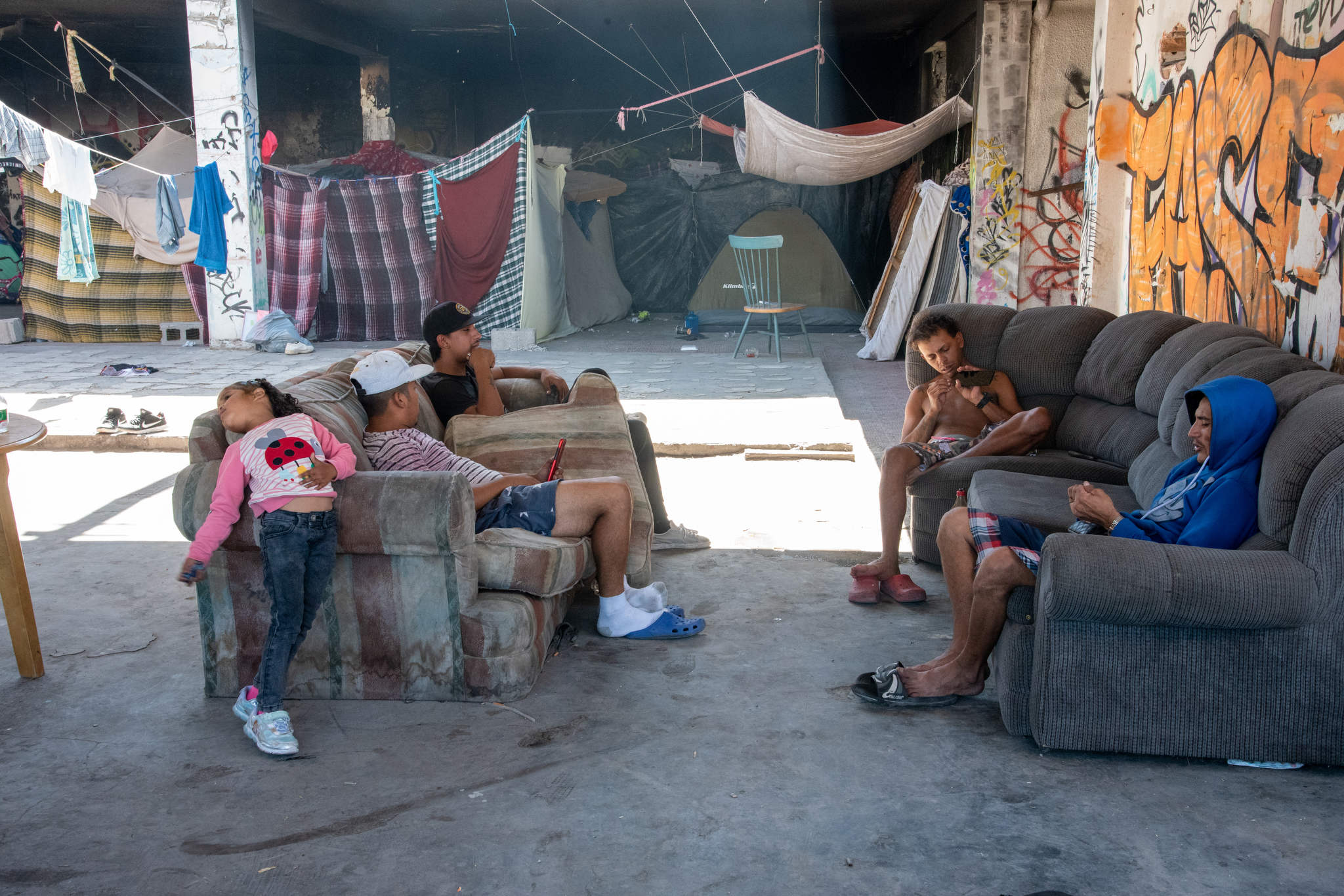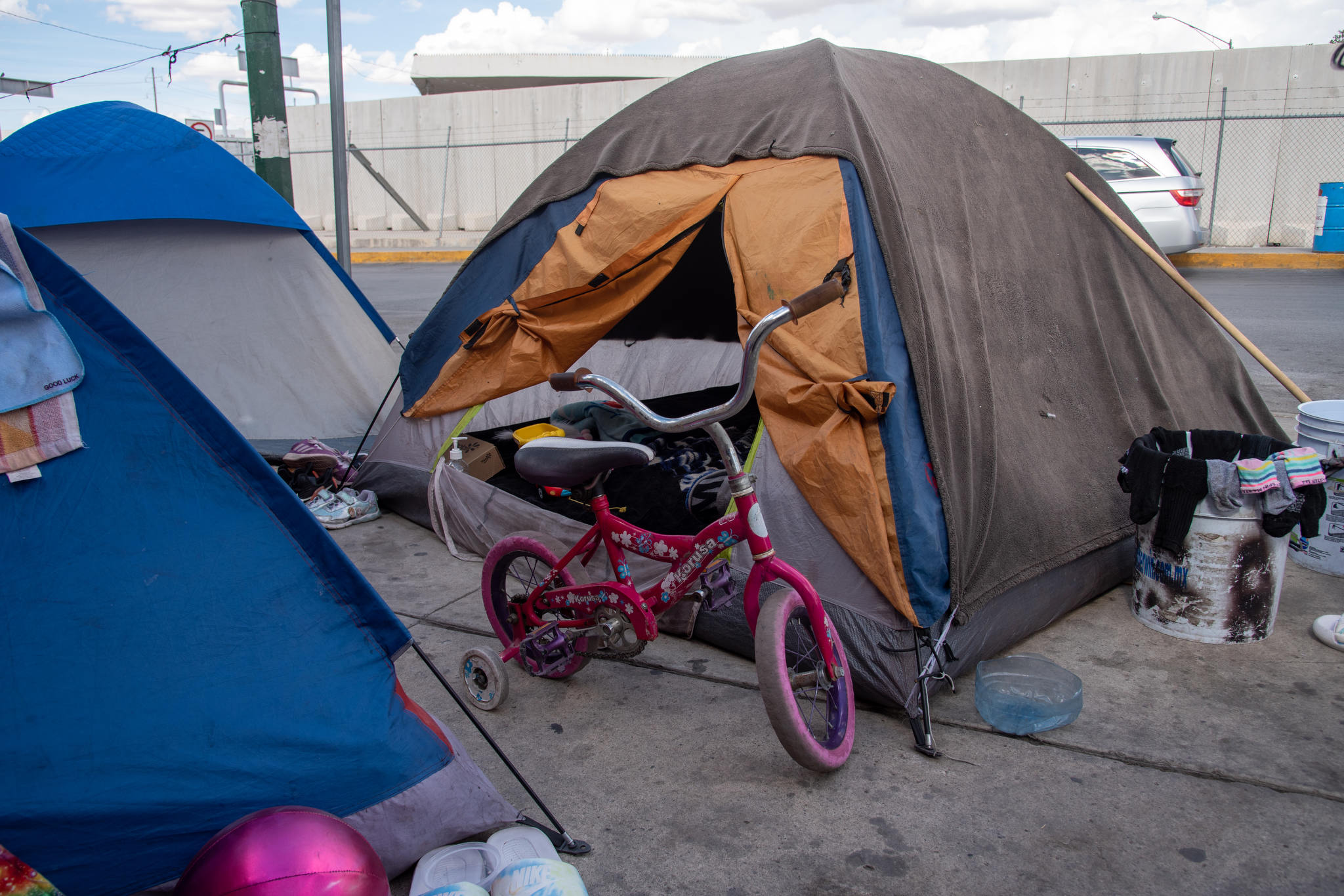This story was originally published by Global Press Journal. Global Press Journal is an award-winning international news publication with more than 40 independent news bureaus across Africa, Asia, and Latin America.
Yaneisi Gámez and her 4-year-old daughter, Yoilimar Gámez, arrived in Ciudad Juárez, Chihuahua, in late March 2023, after having traveled for 19 weeks from their home country of Venezuela. Their goal was to enter the United States.
When they reached the border city, they made a beeline for the downtown area, a meeting point for people on the move given its proximity to the crossing into the U.S. city of El Paso, Texas. Plus, this part of Juárez houses migration and other government offices.
Under the usual circumstances, local authorities would have been out in the street, handing out pamphlets with information on shelters and the rights of people who arrive from other countries. It is an activity carried out by the city government, although it has admitted it cannot reach all travelers. However, at that time, Gámez and her daughter were met only by a group of people living in tents on the street in front of the municipal government’s offices. They refused to stay at any of the government-run shelters.
This refusal came from fear, either of being deported by Mexican authorities or that some disaster might befall them, says Ansony Pineda, a Venezuelan in transit who arrived in the city days before Gámez and her daughter. While he was there, a group of migrants caused a fire in the local detention facility where they were being held, run by the Instituto Nacional de Migración (INM), the government agency responsible for regulating entries into, travel through and exits from the country. The INM declined to comment on the subject.

According to the federal government, the migrants’ actions were a form of protest upon learning they were going to be deported. The death toll reached 40 people. And since the disaster, migrants have lost trust in the Mexican authorities and their ability to keep them safe.
The events have highlighted the insufficient capacity for migrant care in Ciudad Juárez, which has seen increased migration traffic in recent years. At the same time, the city has not been ensuring that those seeking to cross the border receive essential information. The situation, now aggravated by distrust, has made it difficult for people from other countries to have a decent existence while stopping here.
Gámez and her daughter stayed in the downtown tents provided by the city for nearly two months, until May, when the Ciudad Juárez government evicted them. In an attempt to relocate everyone there, the city offered them transitional shelter in other tents several meters away. During that time, Gámez says, no official explained their rights or how to access official shelters. So, fearing another fire at a detention center, mother and daughter moved with about 100 other migrants to an abandoned refrigeration business, where they carved out spaces for themselves using blankets and pieces of fabric.

“No one ever came here to give us information,” says Pineda, 28, who moved to the same refrigeration building.
Héctor Ortiz Orpinel, secretary of the City Council in Ciudad Juárez, says the local administration is sharing pamphlets containing the addresses of international bridges and information on official shelters and the rights and obligations of people on the move. He does admit, however, that it’s difficult to reach those who do not live in the shelters.
María Inés Barrios de la O, coordinator of the international migration studies department and master’s program at El Colegio de la Frontera Norte (El Colef), an educational institution specializing in the Mexico-U.S. border, says the government has no communication strategy on the channels accessed by people on the move.
“Social media outlets are the most important means of communication for migrants, so it is necessary to think of a strategy targeting the media that migrants use or to which they have access.”
“Social media outlets are the most important means of communication for migrants, so it is necessary to think of a strategy targeting the media that migrants use or to which they have access,” she says.
In the case of migrants like Gámez and Pineda, this absence of a strategy translates into disinformation and the inability to access basic services such as legal and medical advice and psychological counseling—which are provided by shelters—in order to have a decent life while in transit.
“There is a lot of disinformation. From the moment they leave their home countries, they know where they have to go because someone told them not to go to the shelters,” Barrios de la O says.
Juárez: Overwhelmed by migration
The migration flow in Ciudad Juárez began to grow in 2019, one reason being that migrants perceived it as offering a safer border crossing compared to higher-traffic locations such as Matamoros, in Tamaulipas, and Tijuana, in Baja California, says Barrios de la O.
The pandemic and subsequent economic crises in Latin America set more migrants in motion with the goal of entering the United States from this border area. In response, public and private entities set up shelters and care facilities for migrants. Now, Juárez is one of the most highly trafficked crossing points for people on the move, Barrios de la O says.
However, the number of migrants surpasses the city’s capacity to meet their needs.
According to tallies conducted by civil and religious associations, there were over 35,000 migrants in Ciudad Juárez.
In April 2023, Chihuahua governor María Eugenia Campos requested that the federal government address what she called the “serious humanitarian crisis,” indicating that, according to tallies conducted by civil and religious associations, there were over 35,000 migrants in Ciudad Juárez. Barrios de la O estimates that between 300 and 500 people arrive daily. Many of them, like Gámez and Pineda, come from Venezuela.
Migration out of Venezuela is considered the region’s largest human mobility event in recent history. According to figures from the United Nations High Commissioner for Refugees, since 2016, 7.7 million people have left the country to escape the humanitarian and economic crisis there.
In a December 2022 publication, El Colef estimates that in the span of six years, Mexico and the United States received, respectively, up to 400,000 and 500,000 people from the South American nation.
‘I never should have come here’
Gámez stayed in Ciudad Juárez for nearly four months, getting by thanks to occasional work as a cleaner at an event hall. But as with many of her fellow migrants, that time was also plagued by the fear of being deported or ending up in an INM detention facility.
To her, the time she spent in the border city was “a nightmare,” which she survived because of her firm desire to make it to the United States to have a better life. “I never should have come here,” she says.

Fed up and worried for the well-being of her daughter, Gámez traveled to Matamoros, Tamaulipas, another city with a U.S.-Mexico crossing, over 1,000 kilometers (621 miles) away. It is considered one of Mexico’s most dangerous border cities, owed primarily to organized crime and the violence that comes with it.
Once there, she and Yoilimar turned themselves in to U.S. authorities in a desperate effort to leave Mexico. While under U.S. jurisdiction, Gámez says, they were admitted to the country as refugees. They traveled to the city of Chicago, Illinois, where they united with friends from Venezuela.
Gámez, her voice faltering, says, “The nightmare is finally over.”








